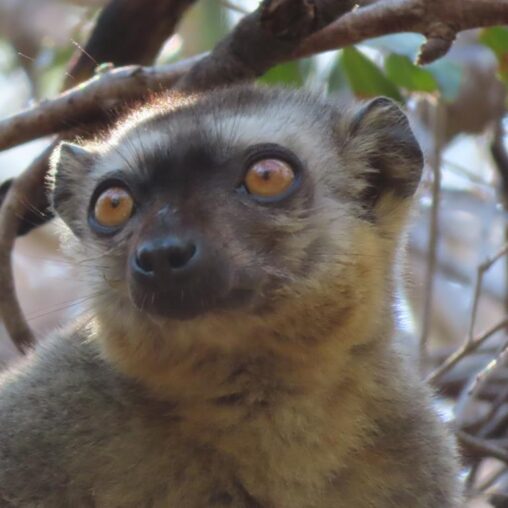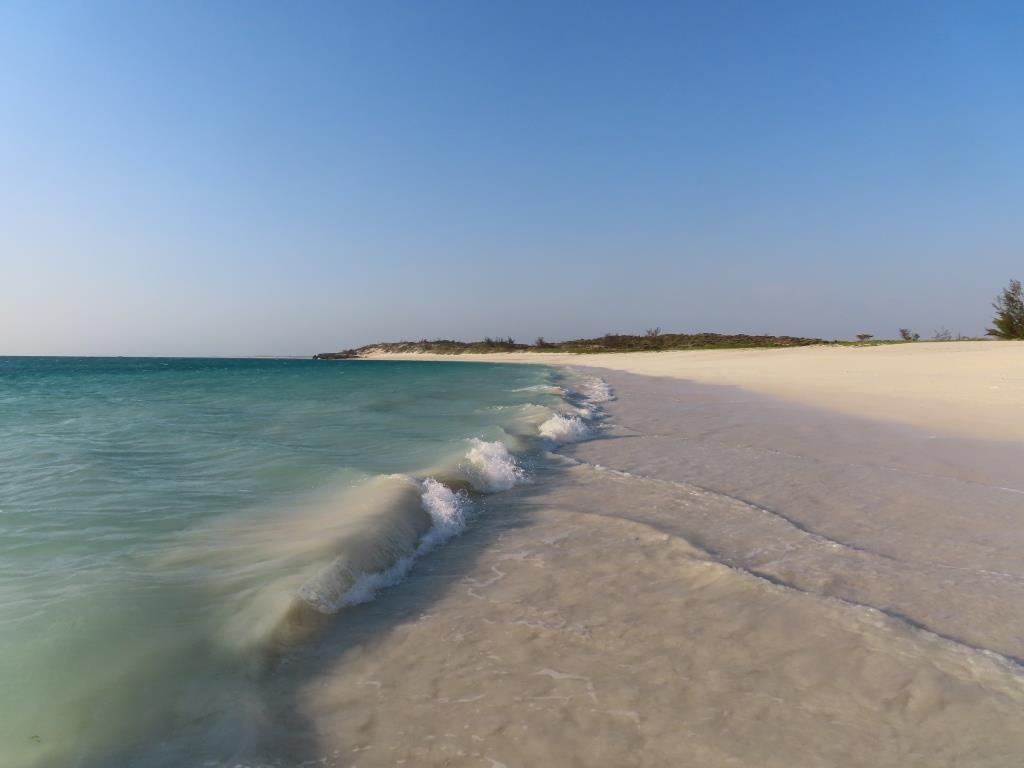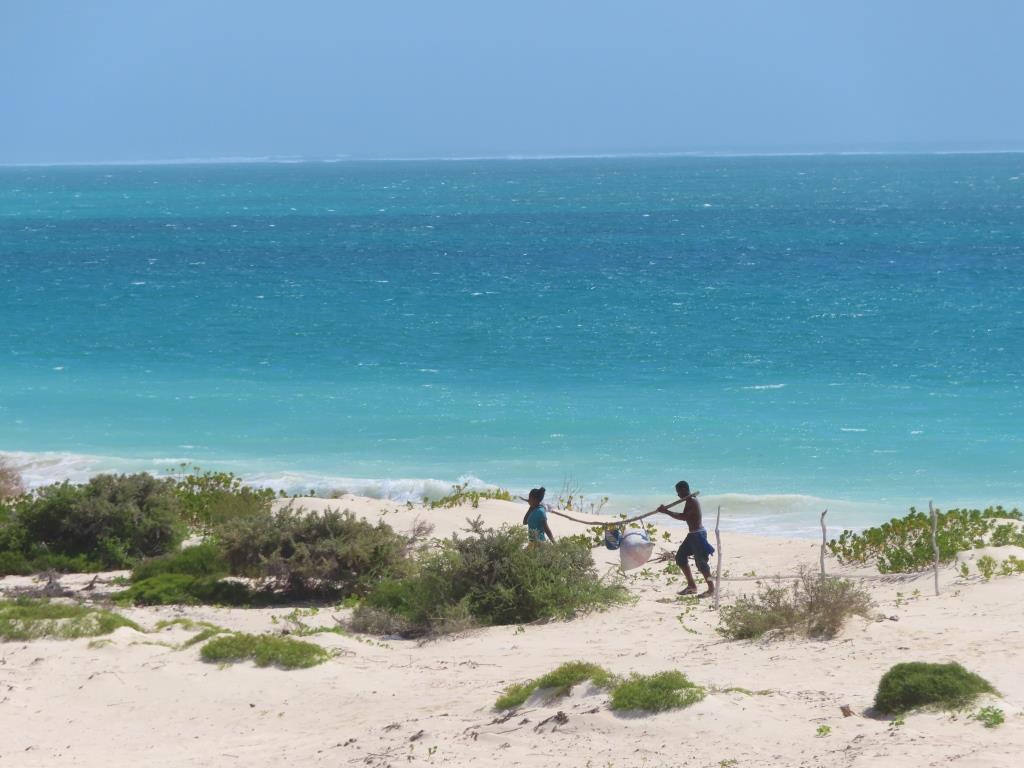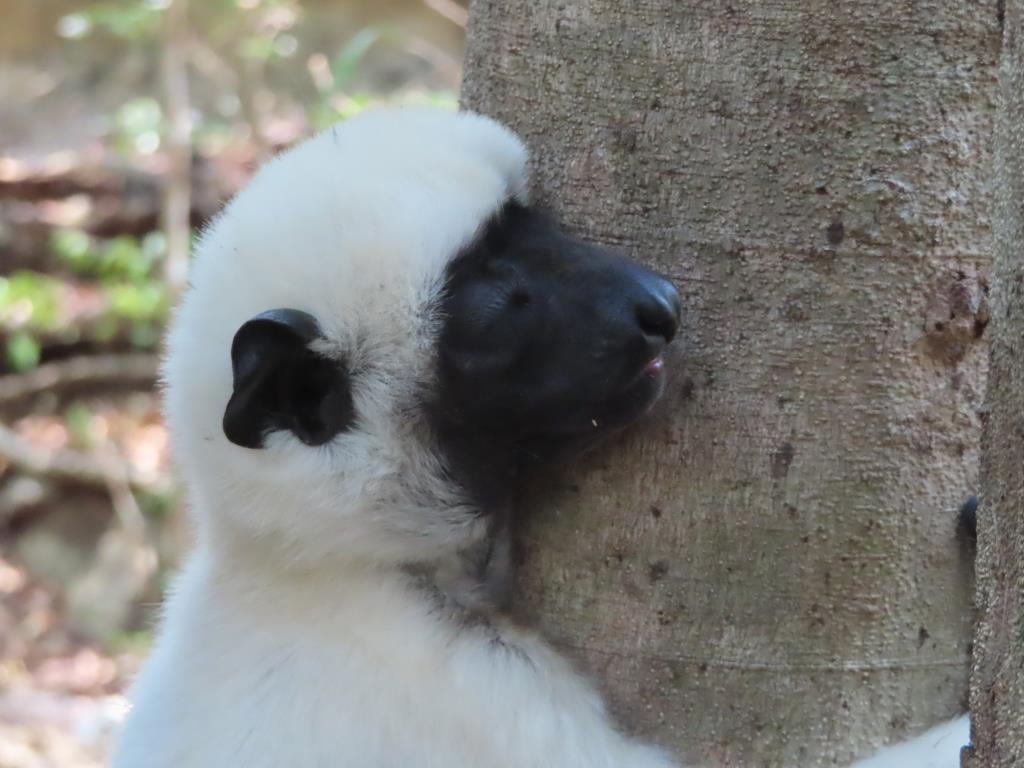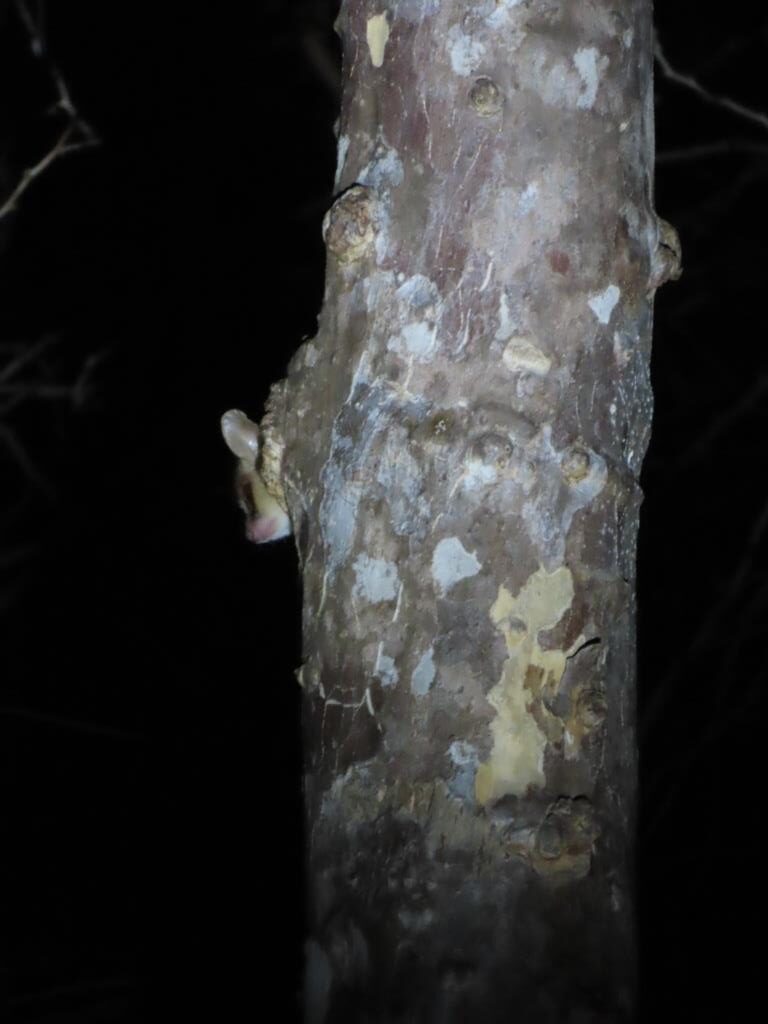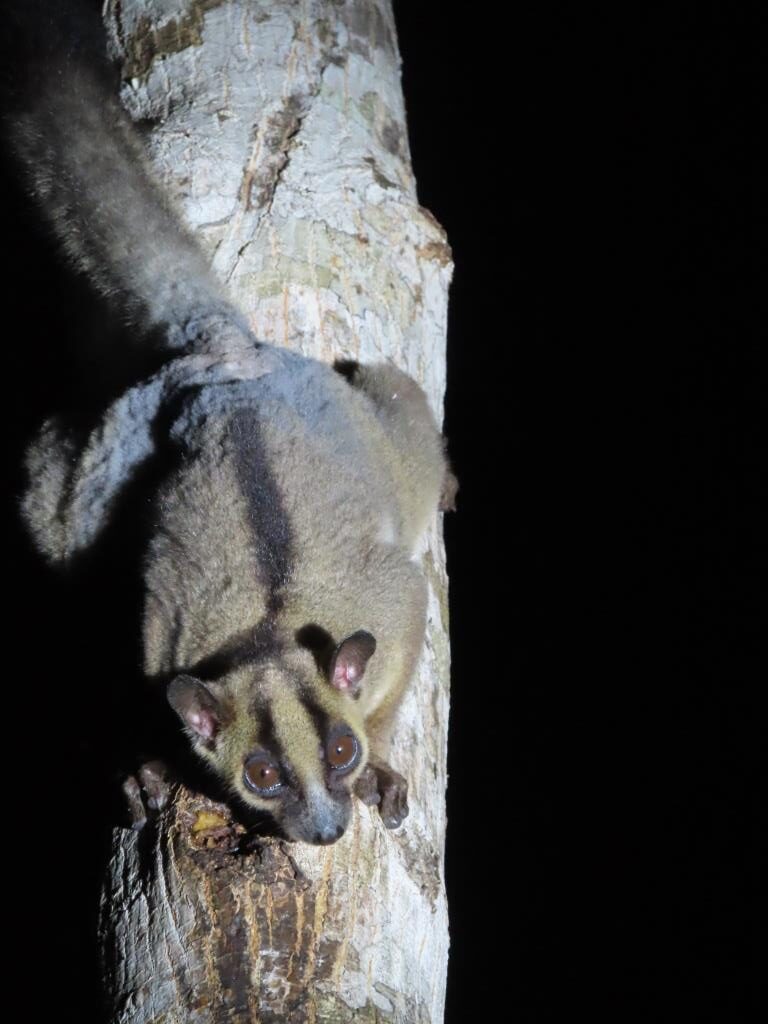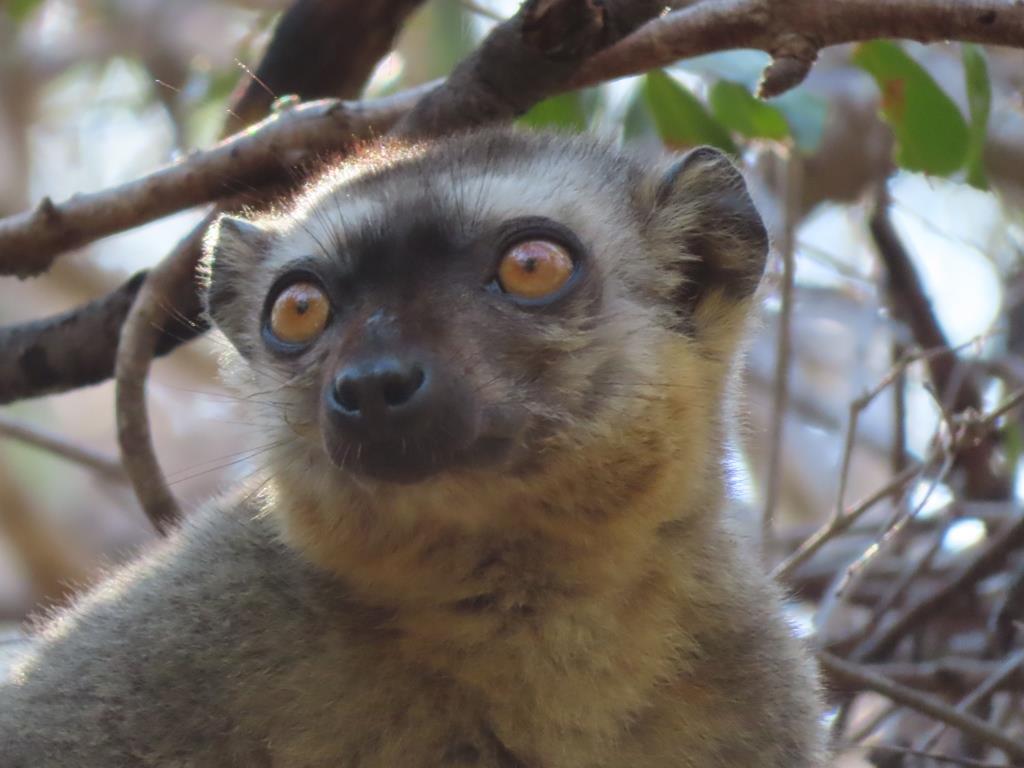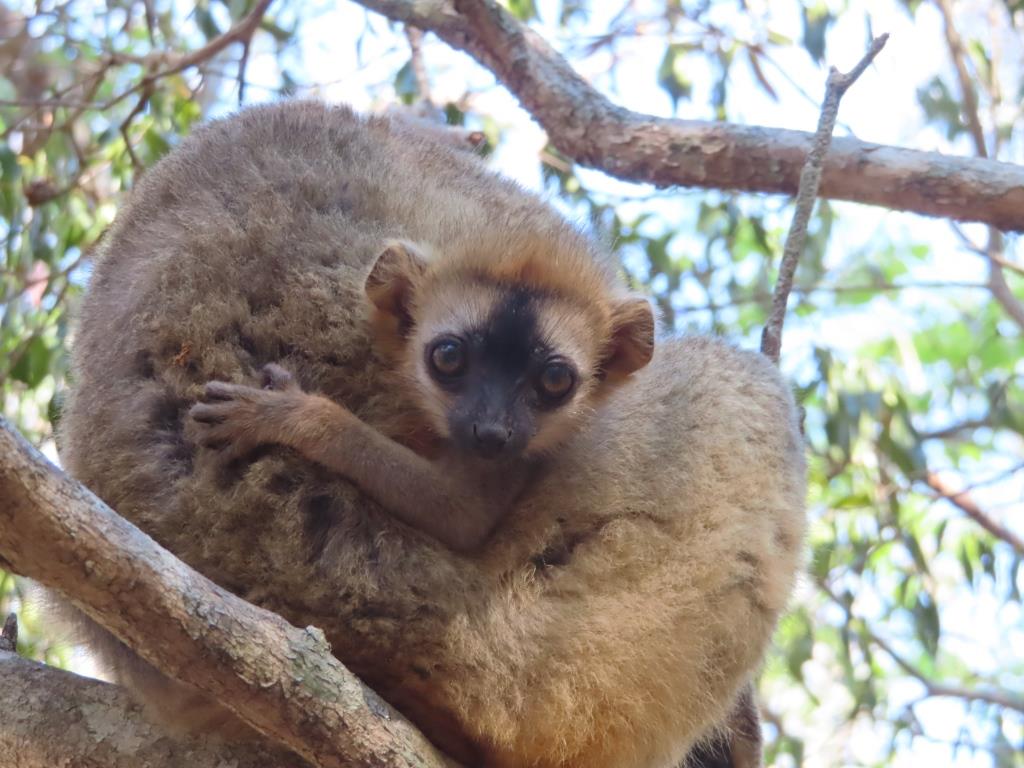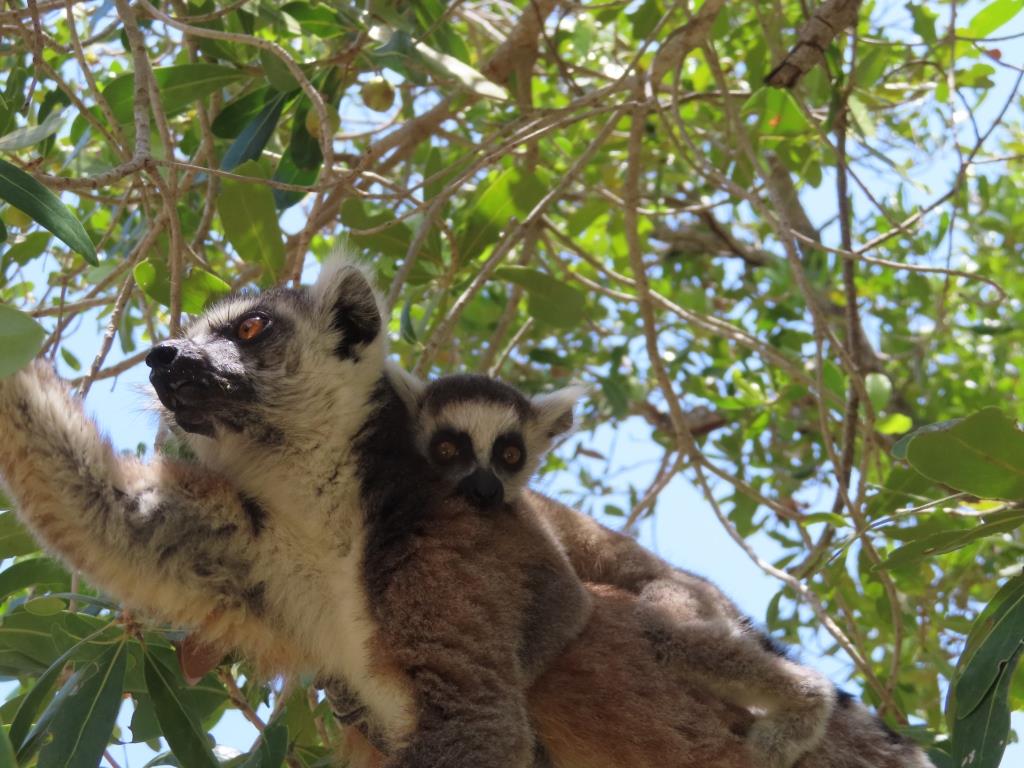We just finished up our 24 day adventure in Madagascar. We had planned so much of our travel for the past few months around getting here. Madagascar has been on our travel bucket list for a long time and we were sad to leave. There is more to see in this beautiful country so we may just have to make a return visit in the future.
I am splitting my post into two posts for a couple of reasons. First, I think if I write everything I am thinking it will be way too long for one post. Second, I want to share with you our experience in one post and then try to convince you why Madagascar belongs on your bucket list as well. So, this post is about the highlights of the past 24 days. Click here to go to the other post to learn everything you need to know about planning your own trip.

Waterfall along Tsiribihina 
Big Tsingy Sumit 
Rope Bridge41 
41 Degrees = Hot + Red 
Window at Isalo 
Another natural pool 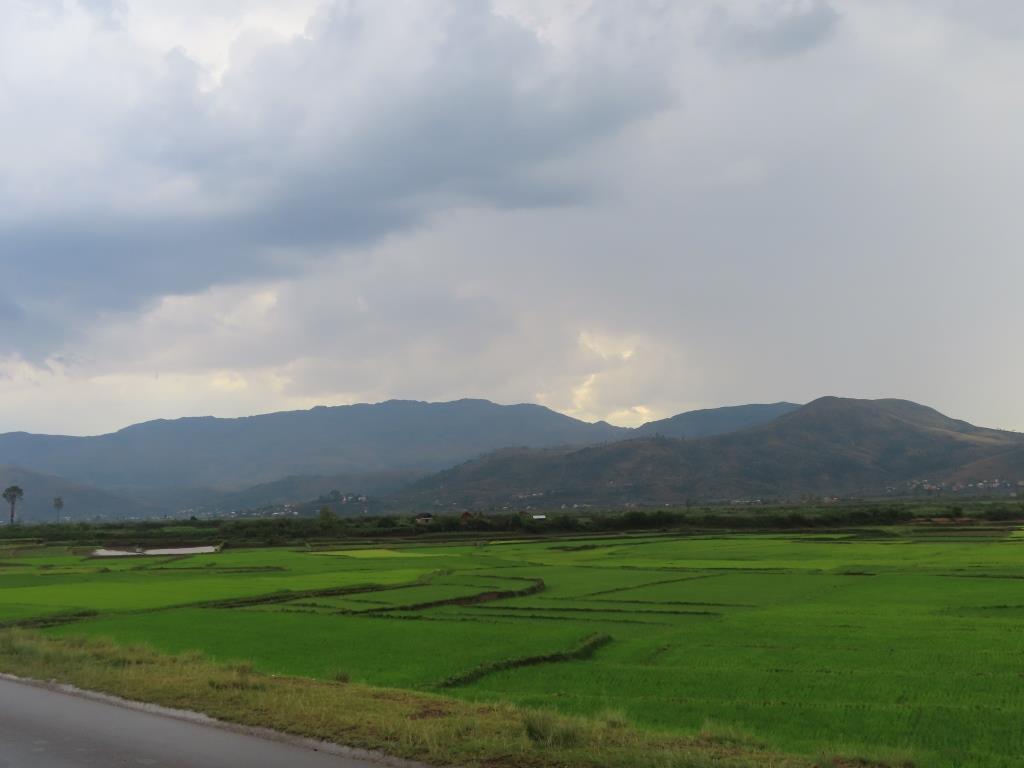
Rice Fields
Here was our itinerary: October 26, 2019 to November 18, 2019
| Highlights |
| Day 1: Arrive in Antananarivo (referred to as Tana). Met at the airport by our driver/guide Tojo (pronounced Tuju). We got a Telma sim card for the phone which was 115,000 Ariary for 10 GB. Went to our hotel and had dinner. |
| Day 2: Full day drive from Tana to Miandrivazo. Lunch in Antsirabe. Our first exposure to the farming lifestyle of Malagasy people and the beginning of the rough roads ahead. National Route 7 (RN 7) followed by RN 34. |
| Day 3: 1.5 hour drive from Miandrivazo to Masiakampy. We got on a pirogue (like a wooden canoe) to get to our motor boat. We had to take the pirogue because the water levels were so low. This is the end of the dry season. The rains will start in mid-November. Our guide for the next three days was Johnny. The crew of the motorboat was six people including a cook, pilots, helpers, and guide just for me and Nic. The cruise took us down the Tsiribihina River towards the ocean. We had lunch on the boat along the river bank and then continued to the Anosin’ampela waterfall where we swam in pools below a beautiful waterfall and got to see our first lemurs. We camped across the river from here. The crew set up a tent and toilet for us. |
| Day 4: Continued along the Tsiribihina River… Started the day after breakfast by going back to the waterfall for a shower… and of course some more lemurs. We stopped at a couple of local villages along the river bank. Several children followed us along for our entire walk through the village, holding our hand. We bought some candies from a little shop because the kids are always saying Vasa bonbon. Vasa refers to us (foreigners) and bonbon is them asking for candy. Life in the village is very basic. Very few people have electricity and life is about farming, fishing and survival. Along our cruise we saw one crocodile, many different kinds of birds, bats, chameleons and geckos. After dinner on our second night, some locals kids came to the camp where all the boats were and performed some local dances around the fire. The crew sang us some Malagasy songs. |
| Day 5: This morning after breakfast we finished the boat trip at Belo sur Tsiribihina. We ate our lunch on the boat and then we said good bye to our crew. They would now boat back to Masiakampy which would take them three days. Tojo met us in Belo. He drove for two days while we were on the boat. We were so shocked at how this was taking so many people and so much time. We had a drive of several hours to get to Bekopaka. This included crossing over a river on a ferry. When I say ferry, I mean two large metal canoes with a platform that holds up to three cars. We had a Gendarme soldier with us as there were some hijackings on this road a couple of years ago. Now the vehicles all travel in a convoy with a soldier with them. It never felt unsafe at all. |
| Day 6: From our hotel we had a 17 km drive to Big Tsingy. It was close to an hour of driving on very rough roads. Big Tsingy involves a hike of about 11 km. We started in a forest and got to see several Sifka lemurs. Then the hike gets tough as you hike up and over very rough terrain. We were equipped with harnesses and had vertical ladders of about 30 – 50 m, wooden walkways and bridges, and crawling through caves. It was an incredible view from the top. These rocks are very unique and used to be part of the sea bed. On the hike back through the forest, the Sifkas were sleeping at ground level. We got some spectacular photos of them right up close. When we got back to the car, we realized that it was 41 degrees Celsius. That evening we went for a night walk with our guide, Augustine, who had been with us at Big Tsingy. He promised us Mouse Lemurs but was unable to deliver. We saw lots of other things though. |
| Day 7: We drove from Bekopaka to Kirindy. As we went to cross the ferry, a German girl and a British guy asked us for a ride. They had paid a truck driver to get to Bekopaka but were now without a ride back. We were the last car leaving and so we agreed to give them a ride. We arrived at Kirindy Reserve in the late afternoon. We did a night walk with our guide Remi. He also happens to be Tojo’s dad. He was able to show us nocturnal lemurs including the Brown Mouse Lemur, Fork Marked Lemur, and Sportive Lemur. There were also lots of chameleons, geckos, etc. There was a fossa (like a fox) and Nic got a glimpse of him but I did not. There was a very large tour group in front of us and my view was blocked. That night we had two mice in our room trying to get into a bag of cereal we had in my bag. At one point Nic opened her eyes and screamed as one of them was on the bed looking at her. |
| Day 8: This morning we did an early morning walk with Remi again. We saw two types of lemurs as well as lots of flora and fauna. After lunch, we drove to Morondava. Along the way we stopped at the lover’s baobab. There are 8 or 9 species of baobabs in the world, 7 in Madagascar. In this whole trip we only saw three species and the lover’s baobab is a species called ADANSONIA rubrostripa (“red bark”). These are the ones that have weird shapes. Locals refer to the baobabs often by their shape. For example, the lover’s baobab is a double trunk that has weaved together. We continued on to Morondava. We went back to the Alley of Baobabs for sunset to get perhaps the most iconic picture of baobabs at sunset. We dropped off the German/UK couple in Morondava in the afternoon. Tojo took us to one of his favourite local food spots. He grew up in Morondava. We ate meat skewers and fried bananas. |
| Day 9: We drove from Morondava to Manja along dirt roads, through bushes, small villages, sand dunes, and crossing rivers. The drive was only 117 km but it was about 6 hours of driving. |
| Day 10: We drove from Manja to Andavadoaka again continuing the off road adventure. We crossed the Mangoky River by ferry. On this ferry, the motors did not work. About 8 guys got in the water and pulled the ferry with two cars on it across the river. We got stuck in the sand on the far side and Tojo paid the guys who towed the ferry to push us through the sand. We drove through the spiny forest of the south west coast to arrive at our resort called Coco Beach. We arrived in the mid-afternoon to a beautiful place with our bungalow overlooking the Straight of Mozambique. We enjoyed the sunset before having dinner. |
| Day 11: We asked Tojo if we could get a little later start today so we could enjoy the beach a bit more. We left about 10 am for a 47 km drive to our next stop at the Shangri-La Lodge near but not in the town of Salary. It took about 3.5 hours. We immediately fell in love with this beach. I have never seen a more magnificent beach. The owner claims it is the best beach in Madagascar and I think he may be right. We swam for a bit and enjoyed the deck of our bungalow overlooking the water. We went for a walk shortly before sunset. We were alone on the beach and so I had an impromptu skinny dip. There was a large group of Hungarians staying at the resort, so they brought in local musicians and dancers to perform. We enjoyed our dinner and a show. |
| Day 12: This day was a full day of relaxation at the Shangri-La. After the long days of driving on terrible roads, it was well received by us. We enjoyed the beach and our bungalow. |
| Day 13: We drove to Ifaty through roads that are sand and rocks. The road starts out on sand along the sea side and then changes to dusty bushes and trees. We hit the end of the dirt road for our adventure. In Ifaty, we visited the Reniala Reserve to see more species of baobabs. Our guide’s name was Relax. |
| Day 14: Staying in Ifaty, we went on a local pirogue early in the morning for some snorkelling in a protected reserve called Massif des Roses. The coral looks like big rose bushes. We had about an hour and a half of snorkelling time. The afternoon was free time. We walked into the town and back to the beach just to explore a little. Tojo took us to a nice restaurant right on the beach for dinner. |
| Day 15: We had a long day of driving from Ifaty to Isalo. We went through Toliara. We stopped for a quick visit at a village where they mine sapphires. As we arrived in Isalo, we went to a hotel that I had found had a geocache. It was at the reception desk so it wasn’t a difficult find. Nevertheless, score one for Madagascar. After arriving in Isalo, we went at sunset pictures at the Window of Isalo. It is a strange rock formation that has formed and tourists crowd around to take photos of the sun setting through the whole in the rock. People were losing their minds, arguing and yelling at each other as they fought for photos in this location. |
| Day 16: We had a day hike in Isalo National Park with our guide Feno. This ruiniform massif is a Jurassic sandstone mountain that is heavily eroded. We were able to break up the hike with a swim in a pool below a waterfall. The highlight of the hike was our first glimpse of ring tailed lemurs. |
| Day 17: We had another long drive from Isalo to Ranomafana. |
| Day 18: We visited Ranomafana National Park for a hike with our local guide, Herina (our only female guide). We saw several more species of lemurs, chameleons, and other reptiles. That evening, we did a night walk with Herina where we got a fantastic chance to see a Mouse Lemur. Again tourists all gather around a few spots and one of the local guide smears banana on a branch. All of a sudden he turns on a light and there is a mouse lemur eating the banana. They are tough to see because they are quite small and fast and are scared easily by the light. However, in this case, he sat there eating his banana apparently unphased by the lights and cameras. |
| Day 19: Today we drove from Ranomafana to Antsirabe closing the loop. We stopped in Ambositra for lunch that included a music and dance show. We explored some of the local art as this place is known for its artists. We went out for pizza with Tojo for dinner. |
| Day 20: From Antsirabe we drove to Andasibe. We stopped in Tana for lunch and a search for a geocache (we didn’t find it, darn). There was terrible traffic along the RN 2. We did not arrive until about 9 pm (about 4 hours longer than it should have taken us). |
| Day 21: We did a hike of about 2.5 hours in Analamazaotra National Park with our local guide Leva. Here we got to see some new species of lemurs including the biggest living lemur the Indri indri. That night we did a night walk also with Leva and got to see more nocturnal lemurs, reptiles, etc. |
| Day 22: We drove about an hour and a half from Andasibe to Mantadia National Park. Here we did a 4 H walk looking mostly for new reptiles like the painted frog. We did get see several lemurs but never did see a painted frog. On the way back, we stopped at Vakona’s Lemur Island. There are 26 lemurs on this small island reserve. The lemurs were all brought here taken from people who had domesticated them. They are dependent on humans to feed them. Some of them climb all over you to get fed pieces of carrot from the guide. There is also a crocodile park at Vakona. We got to see them feeding the crocs. |
| Day 23: We drove from Andasibe to Tana today. We stopped at the Exotic Park along the way. They have chameleons, geckos, snakes, and more in this park. You can hold them and touch them. We continued the drive to Tana where we stopped for lunch. We were supposed to do a tour of the Queen’s Palace but unfortunately it is closed for renovations. Instead, our guide walked us around the outside of it to enjoy the panoramic views of Tana. Finally, Tojo dropped us off at our hotel at about 3 pm. We will likely go to bed early for our 4 am transfer to the airport. It was a sad good bye as we parted with Tojo. He is an excellent guide and we are happy to call him a friend. |
| Day 24: We have a flight at 6:10 am from Tana to Mauritius. |
While Tojo was our driver/guide, every park or hike we went to we had a local guide. In a few cases we had a guide as well as an animal spotter. All of the guides spoke English well and really knew their stuff. We were amazed at how good they were at spotting animals. In some cases they go by sound, but on one occasion we were driving along the road and the guide told Tojo to stop. He jumped out and found a giraffe weevil. He had not been able to find one earlier but he just saw it as we were driving by. And they are very small. Tojo was our coordinator of all things related to transportation, accommodations, tours, meals, etc. He also knows his stuff and I am sure he could be one of the local guides; but his job was to line up the local guides for us. They are all extremely hard workers.
All of our accommodations were comfortable. We went with medium level places rather than high class. Only in a couple of places were they kind of rustic. Mostly they were bungalows with a bug net over the bed. All of them had their own bathroom, shower, and hot water. An American breakfast was included in our rate. We paid for our own lunches and dinners.
While Madagascar is a poor country, the people seem to be extremely happy. Only in Tana did we find anyone begging. In the villages, they seem to have plenty of food in most cases because they grow it or pick right off the trees. Mango trees are growing everywhere wildly and they were just getting ripe while we were there. People were always waving at us and saying hello. The kids were always asking for candies… or money, or a water bottle. They use the water bottles to put honey in to sell. We started filling up our used water bottles with tap water in the hotels and giving them out to people who were asking for water.
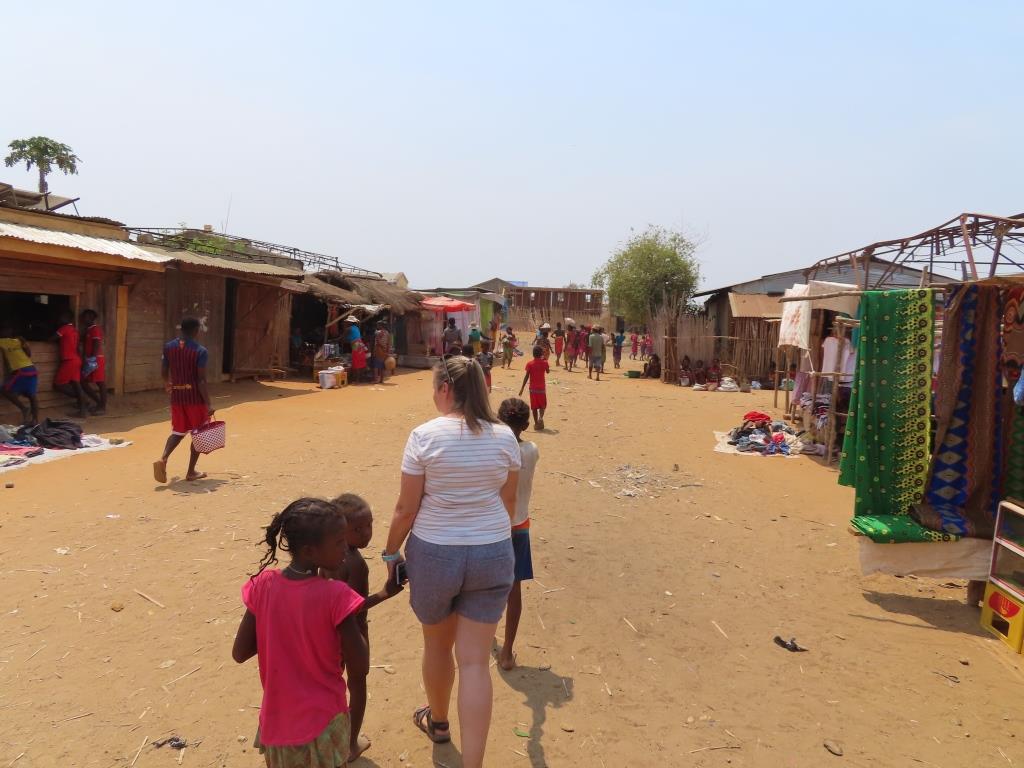
Nic made lots of friends 
Girls learn from a young age how to carry heavy loads on their heads 
Dancing around the fire 
Tojo lined them up for bonbons 
Waiting for bonbons 
Doing laundry in the river 
Working the Rice Fields 
Cultural Dance 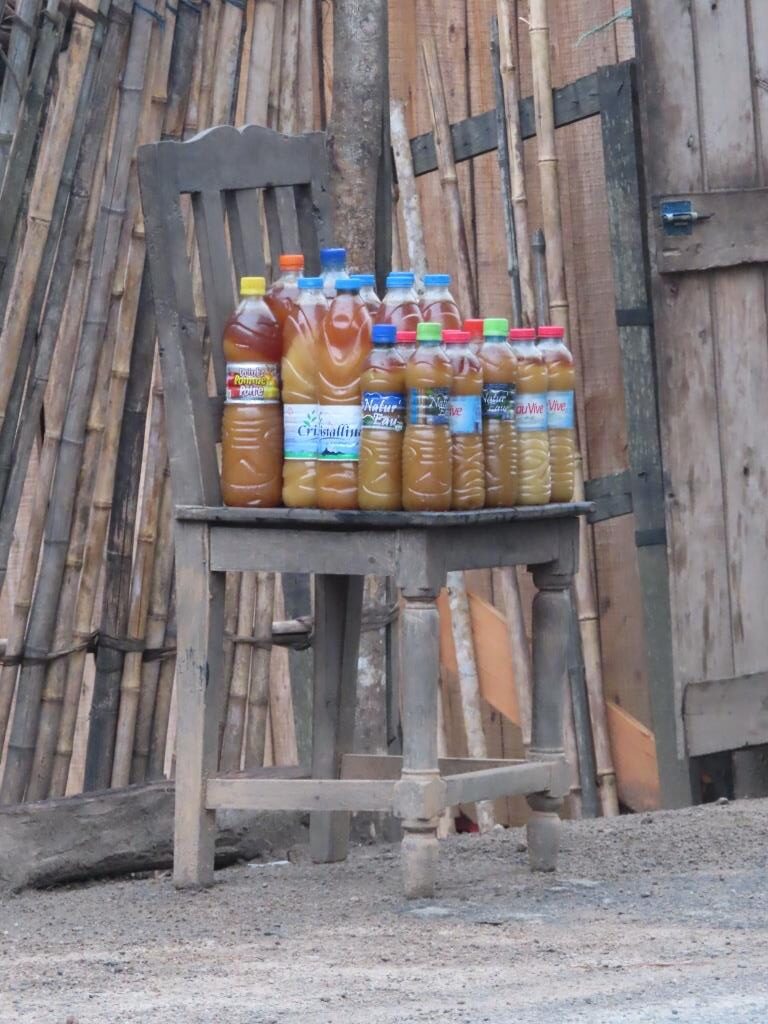
Honey for sale 
Tojo
Here is a short summary of some of the things we saw (lemurs, chameleons and baobabs), not that these are all that matter.
Types of Lemurs (21) we saw:
Nocturnal – Wooly, Fat Tailed Dwarf, Fork Marked, Sportive, Grey Mouse, Brown Mouse, Goodman’s Mouse
Diurnal – Diademed Sifka, Decken’s Sifka, Verreaux’s Sifka, Milne Edwards Sifka, Common Brown, Indri, Grey Bamboo, Golden Bamboo, Greater Bamboo, Red Fronted Brown, Red Bellied, Ring Tailed, Black and White Ruffed, Red Ruffed

